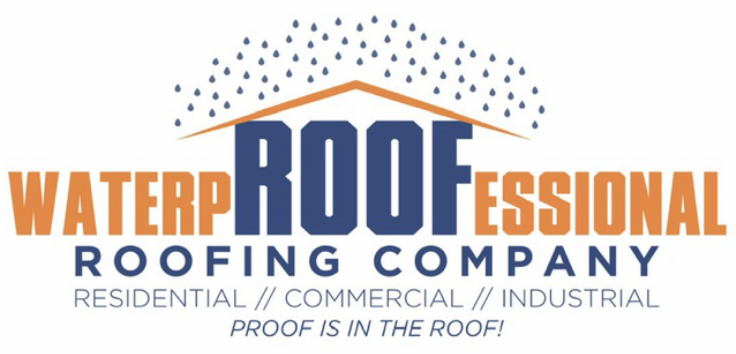Your home’s roof does more than just protect—it defines the character of your home and affects your energy bills, comfort, and resale value. Whether getting a new roof or replacing an old, tired one, selecting from the best roofing materials can feel overwhelming. There are so many options, from classic asphalt shingles to sleek metal panels and even eco-friendly synthetics. But here’s the thing: you don’t have to break the bank to get both durability and style. In this guide, we’ll walk you through affordable yet durable roofing materials every smart homeowner should know, along with pro tips and links to expert roofing services like Waterproofessional to make your journey smoother.
Why Roofing Materials Matter More Than Ever in 2025
As we step into 2025, roofing materials are evolving. With innovations in durability, energy efficiency, and style, today’s options offer more value than ever. Whether you’re comparing roofing material costs or exploring eco-friendly shingles, your roof’s performance directly impacts your wallet and your peace of mind.
In fact, the roofing materials comparison for 2025 shows a strong trend toward sustainable options like synthetic roofing materials and metal roofing materials. These provide long-lasting protection with less maintenance—perfect for the modern homeowner looking for value.
Asphalt Shingles: Classic and Budget-Friendly
When it comes to affordable roofing, asphalt shingle roofing still takes the crown. They’re lightweight, easy to install, and cost-effective, making them ideal for most American homes. Even better? Manufacturers now offer versions with enhanced durability and better wind resistance.
The roofing materials cost for asphalt shingles usually ranges from $3 to $5 per square foot, including installation. That makes them a go-to for budget-conscious homeowners. If you’re in Illinois and need professional advice, check out roof repair services in Champaign, IL, for expert help.
Metal Roofing: Sleek, Durable, and Growing in Popularity
If you want something a little more modern and long-lasting, metal roofing materials are worth every penny. Known for their durability—often lasting 40 to 70 years—metal roofs resist fire, mildew, insects, and rot. Plus, they reflect solar heat, which can reduce cooling costs.
While metal roofs may come with a higher upfront price tag ($5 to $12 per square foot), they quickly pay off with energy savings and minimal maintenance. They’re a rising star in the list of best roofing materials for 2025 and beyond.
Clay Roofing Tiles: Timeless Beauty Meets Strength
Looking for a roof that makes a statement? Clay roofing tiles offer unmatched aesthetic appeal, especially for Mediterranean or Southwestern-style homes. But they’re not just about looks; clay tiles are highly durable and fire-resistant.
Yes, they are heavier and slightly more expensive (averaging $10 to $18 per square foot), but their lifespan of up to 100 years makes them a wise investment. Always ensure your home structure can handle the extra weight before installing them.
Slate Roofing Materials: The Gold Standard in Longevity
When durability is your top priority, slate roofing materials top the charts. Natural slate is both stunning and practically indestructible, often lasting over a century. It resists fire, mold, and harsh weather like a champ.
The roofing materials cost for slate is higher—think $15 to $30 per square foot—but it offers unparalleled durability and value over time. It’s perfect for homeowners who see their property as a long-term investment.
Synthetic Roofing Materials: The Future Is Here
One of the hottest trends in roofing materials for 2025 is synthetic roofing materials. Made from rubber, plastic, or polymer blends, these materials mimic the look of natural wood or slate but at a fraction of the cost and weight.
They’re lightweight, eco-friendly, and built to last 40 to 50 years. Best of all, they’re often more affordable, running about $7 to $12 per square foot. For homeowners seeking the sweet spot between affordability and durability, synthetic options are a top pick.
Roofing Materials Comparison: Which One’s Right for You?
So, how do you choose among these great options? Start with a roofing materials comparison based on your budget, climate, and aesthetic preferences:
- Budget-conscious? Asphalt shingles and synthetic materials are your best bet.
- Looking for energy efficiency? Metal roofing materials shine here.
- Want timeless beauty? Go for clay roofing tiles or slate roofing materials.
- Need expert advice? Explore this detailed guide for homeowners.
Always consider local building codes and consult a professional roofer before making your final choice.
Final Thoughts: Make the Smart Choice for Your Roof
Choosing the right roof isn’t just about style—it’s about protecting your home, saving on energy bills, and adding long-term value. Whether you go with the ever-reliable asphalt shingles, sleek metal, elegant clay tiles, timeless slate, or cutting-edge synthetic materials, there’s a roofing solution that fits your needs and budget.
For expert advice tailored to your home, don’t hesitate to connect with the pros at Waterproofessional. With their years of experience, they can help you make an informed choice and ensure your roofing project goes off without a hitch.
Frequently Asked Questions (FAQs)
Q: What is the most affordable yet durable roofing material?
A: Asphalt shingles are the most affordable, while synthetic roofing materials offer a strong balance of affordability and durability.
Q: How long do metal roofs last?
A: Metal roofing materials can last between 40 and 70 years with minimal maintenance, making them one of the most durable options.
Q: Are clay roofing tiles heavy?
A: Yes, clay tiles are heavier than other materials, so it’s important to ensure your home structure can support the added weight.
Q: Is synthetic roofing eco-friendly?
A: Yes! Synthetic roofing materials are often made from recycled content and are fully recyclable at the end of their life cycle.




